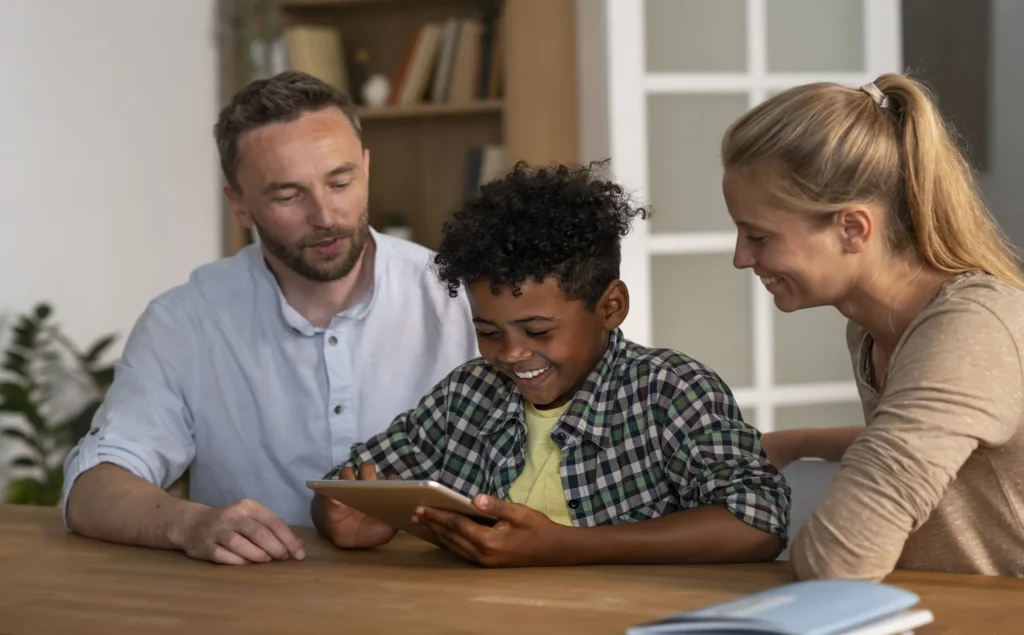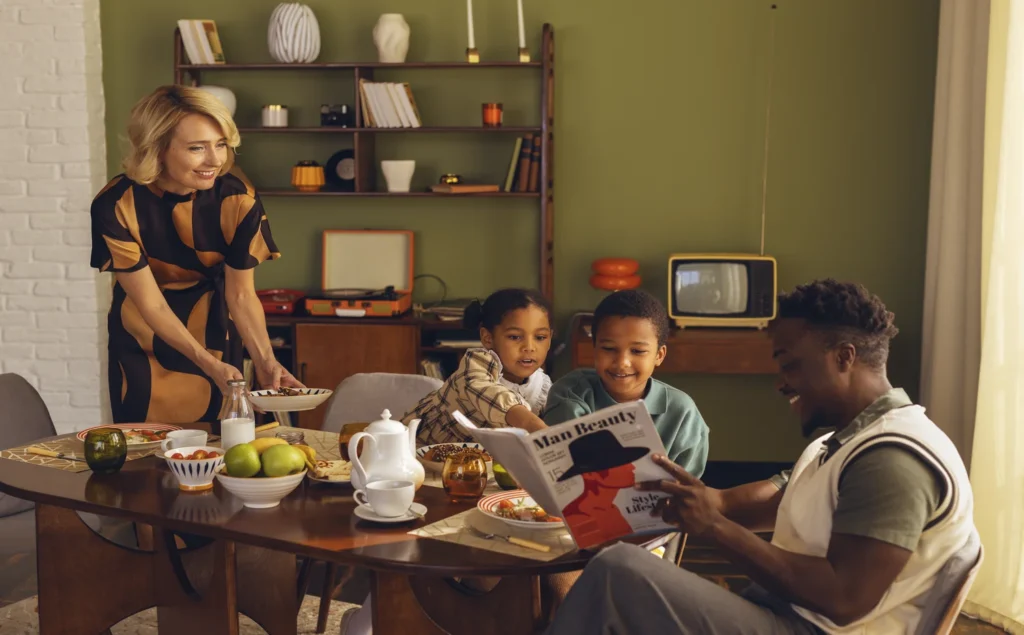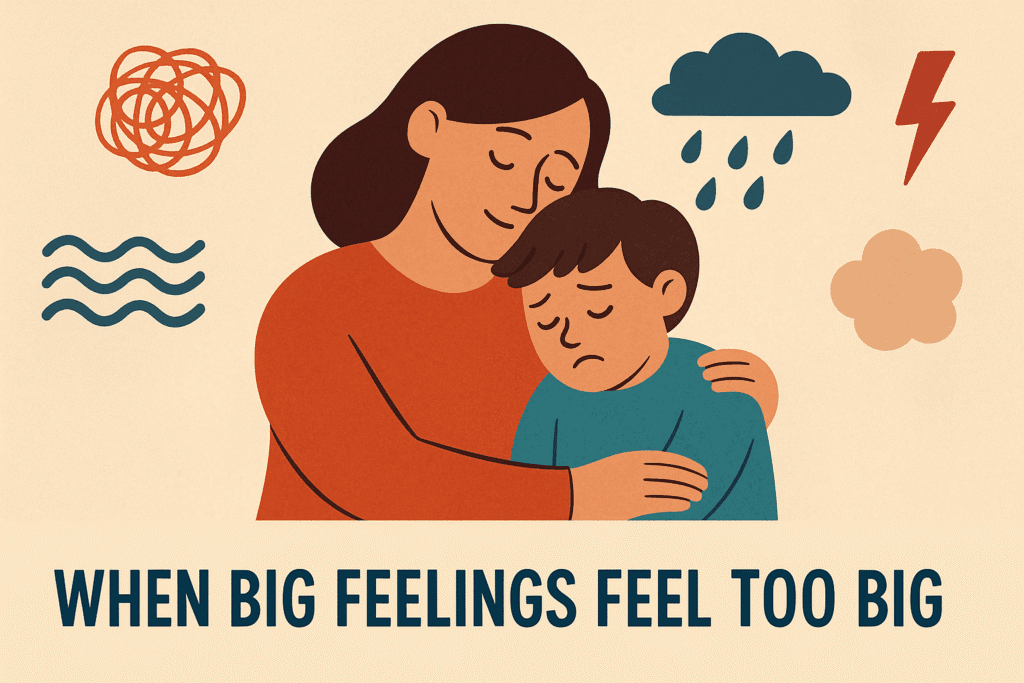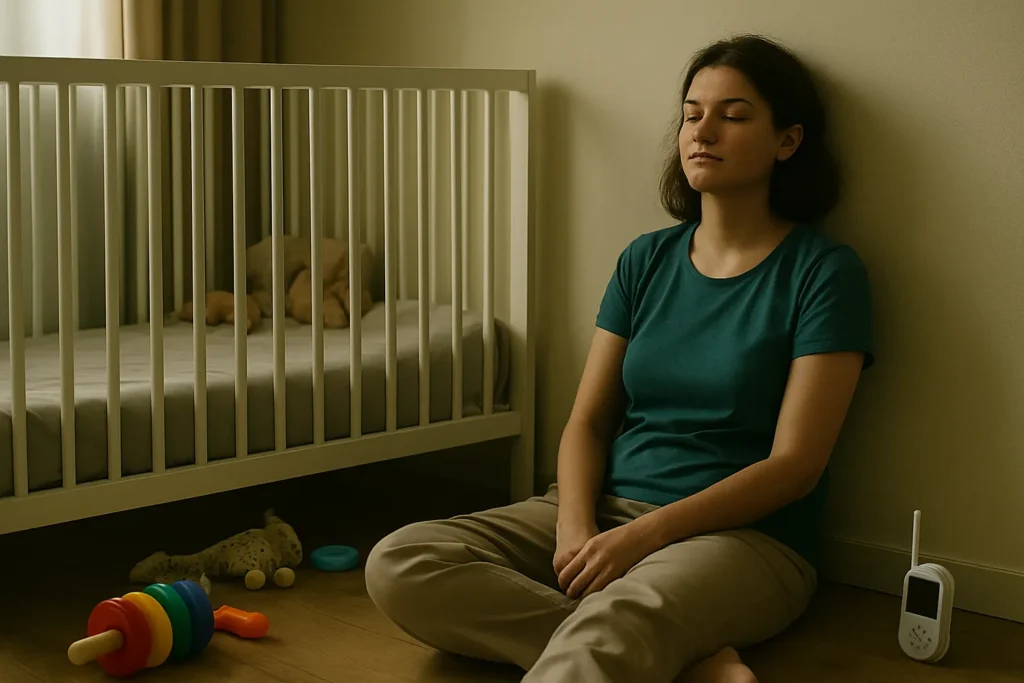Introduction: Why Empathy Feels Harder—And Matters More
There’s a moment many modern parents know too well: your child is chatting with someone online, and suddenly they’re upset. You ask what happened. They shrug and say, “I dunno, their message sounded weird.” No facial expressions, no tone of voice—just confusion.
Parenting in digital age means our kids are growing up in a world where most conversations happen behind screens. And while tech has opened doors for creativity and connection, it’s also taken away something crucial—emotional context.
Teach the foundations of emotional intelligence to deepen empathy skills.
Teaching kids to be empathetic isn’t just about being “nice.” It’s about helping them truly understand what someone else is feeling—especially when they can’t see their face or hear their voice. And in today’s world, that takes more intention than ever before.
This guide isn’t about perfection. It’s about raising kids who pause before they post. Who listen. Who care. And who show kindness, even when it’s not the easy thing to do.
Table of Contents
What Is Empathy—And Why Should Kids Learn It Young?
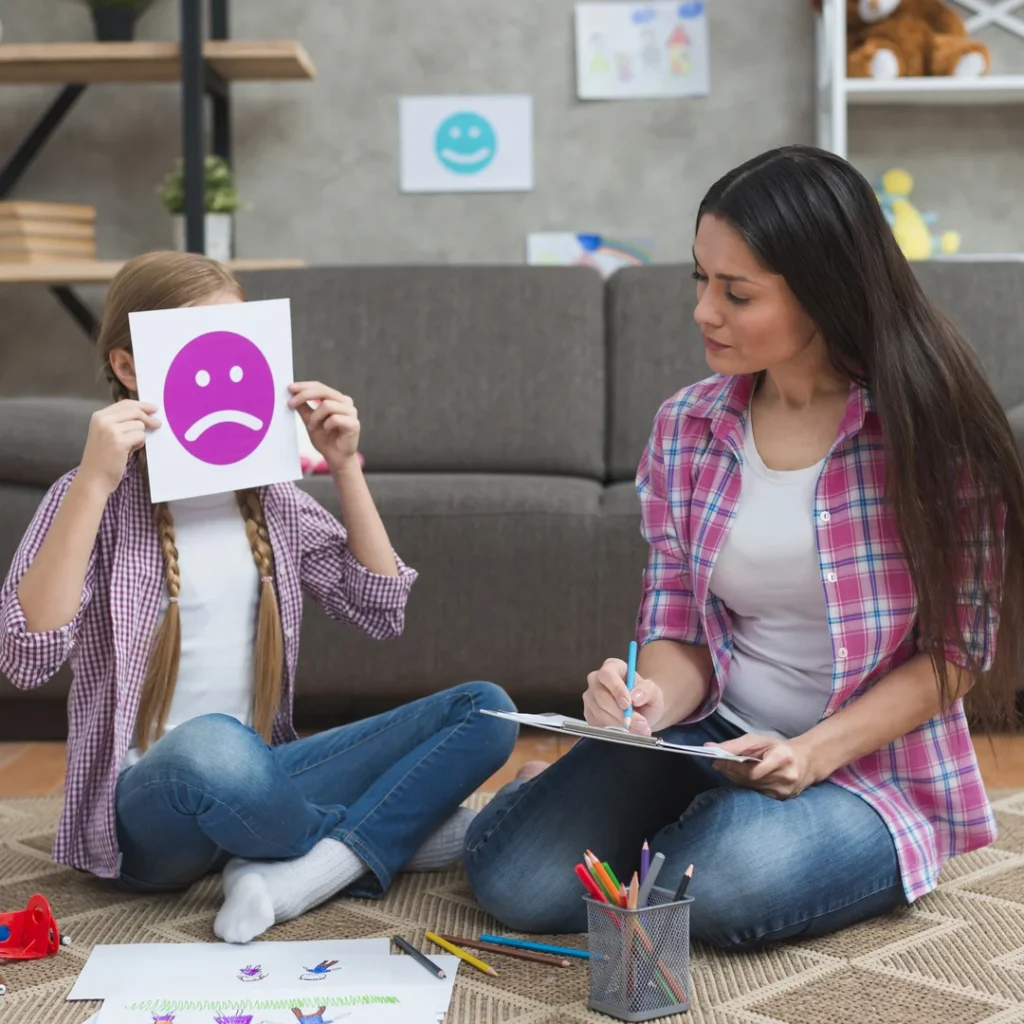
Let’s be honest. We’ve all told our kids, “Say sorry!” or “Be kind!” But sometimes, those words come out of their mouths with no feeling behind them. That’s because empathy—real empathy—goes deeper than manners.
It’s the ability to put yourself in someone else’s shoes. Not just to know they’re sad or frustrated—but to feel it with them. To say, “That looks tough. I’ve felt like that, too.” It’s the emotion that makes humans connect in a world that often feels disconnected.
The Three Forms of Empathy (Yes, There’s More Than One)
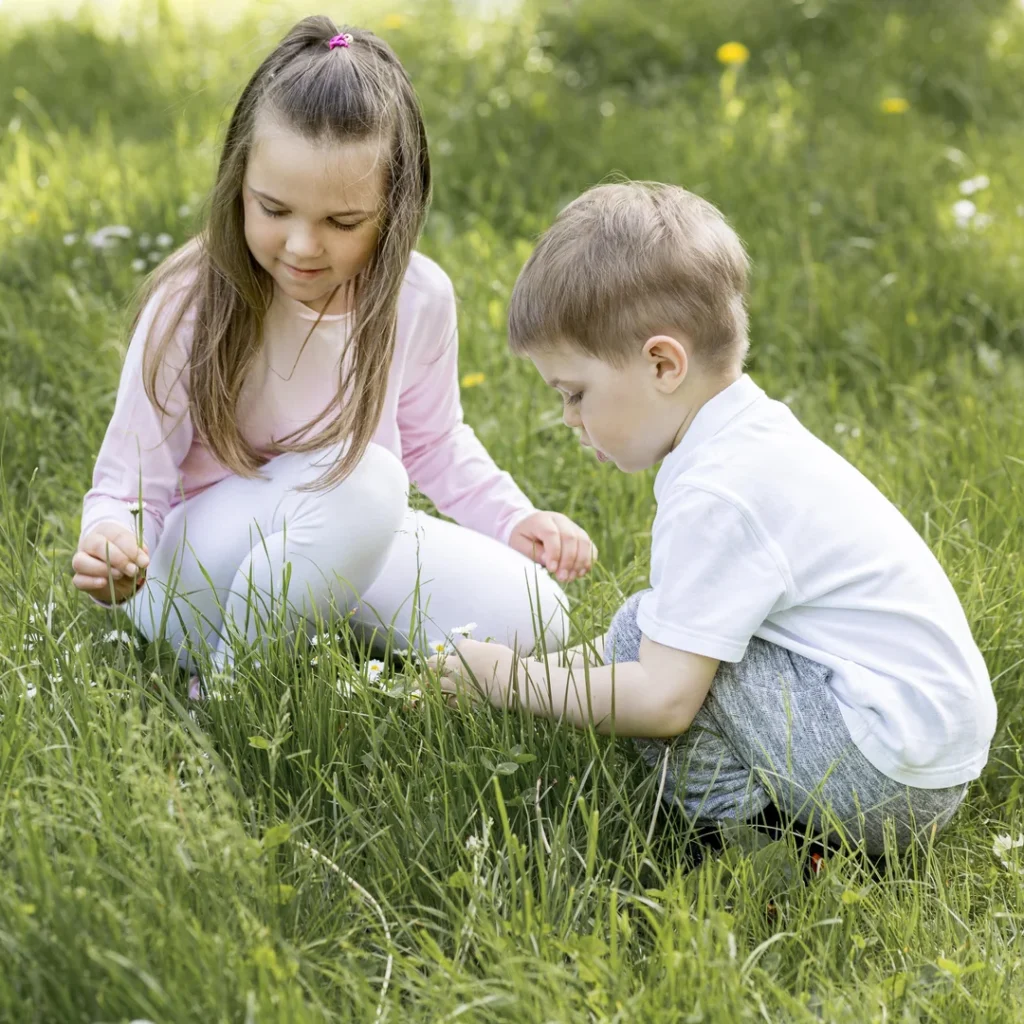
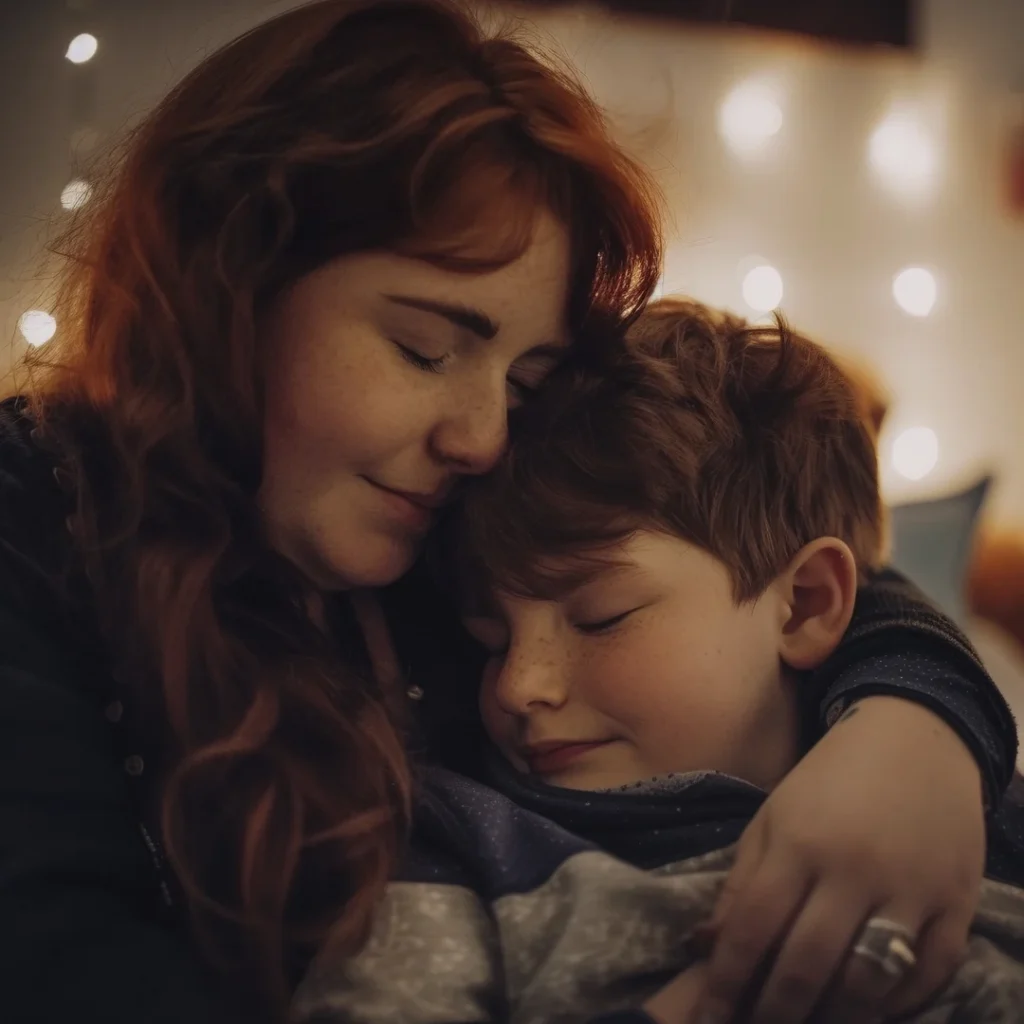
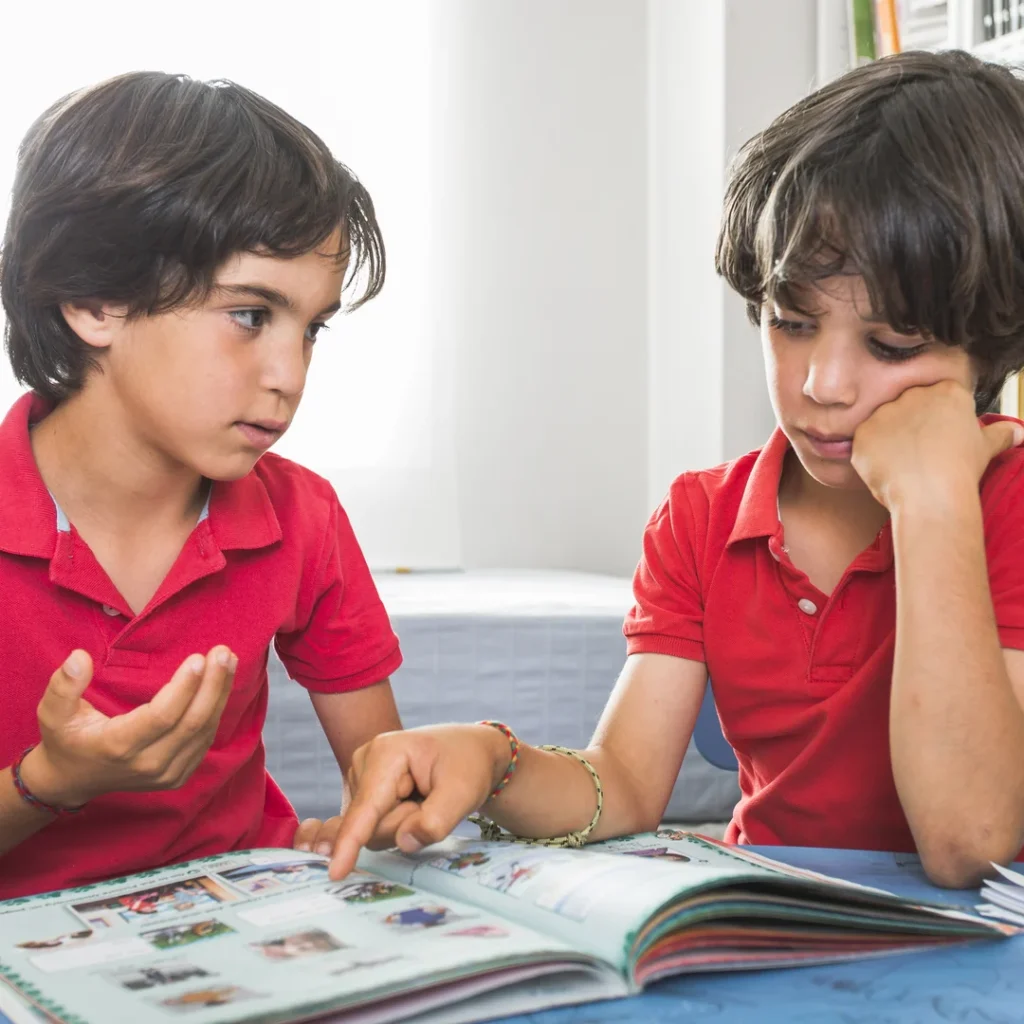
When we talk about teaching empathy, we’re really teaching three different skills:
- Cognitive empathy: Recognizing what someone else is feeling.
Example: Your child notices a classmate’s head is down and says, “I think she’s upset.” - Emotional empathy: Feeling those emotions along with them.
Example: Their little brother gets hurt and they start to tear up, too. - Compassionate empathy: Doing something to help.
Example: They see a new student struggling to find their way and offer to walk with them.
Each of these forms matters. And together, they help kids not just understand emotions—but respond to them in ways that strengthen relationships.
Why It’s Tougher Now: Empathy and the Digital Disconnect

When we were kids, we learned how people were feeling by being around them—on the playground, at the dinner table, on long car rides with no phones to distract us. We picked up on eye rolls, sighs, happy smiles, and nervous fidgets.
Now? A lot of our kids’ interactions happen through typed words and emojis. And while technology has its benefits, it can also blur emotional lines.
Here’s what’s changed—and why it matters:
- Text has no tone: A simple “K” can sound angry, passive-aggressive, or just fine—depending on how it’s read.
- Social media is performative: Kids are often presenting a version of themselves rather than engaging authentically.
- Screens create distance: Without face-to-face feedback, kids may struggle to read cues or understand when someone’s hurt.
This shift can make it harder for children to develop the intuitive, empathetic responses they need for real connection—both online and off.
💡 Real-Life Parenting Tip: The next time your child gets upset over a message, ask them: “What do you think the other person meant?” Help them practice reading between the lines—without jumping to conclusions.
Empathy in Action: Stories Kids Can Relate To
Kids learn empathy best not through lectures—but through stories and lived moments. They remember how something felt more than how it was explained.
Here are a few empathy examples to help your child connect the dots:
1. The Silent Lunch
Imagine a student sitting alone in the cafeteria after being picked last in gym class. Your child notices. Instead of staying with their usual group, they grab their tray and sit next to them.
🟢 This is emotional empathy—feeling what someone else is feeling.
2. The New Girl Who Forgot Her Pencil
A new student forgets her supplies. Your child offers an extra pencil and says, “I forget mine all the time—it’s okay.”
🟢 This is compassionate empathy—recognizing a need and acting on it.
3. The Unreadable Text
Your child gets a short message from a friend that sounds cold. Instead of assuming the worst, they send, “Are you okay? You seem off.”
🟢 This is cognitive empathy—reading cues and asking questions before reacting.
These acts of kindness may seem small—but they shape how children move through the world. And the more we point them out, celebrate them, and model them, the more our kids will internalize them.
Teaching Kindness Through Everyday Moments
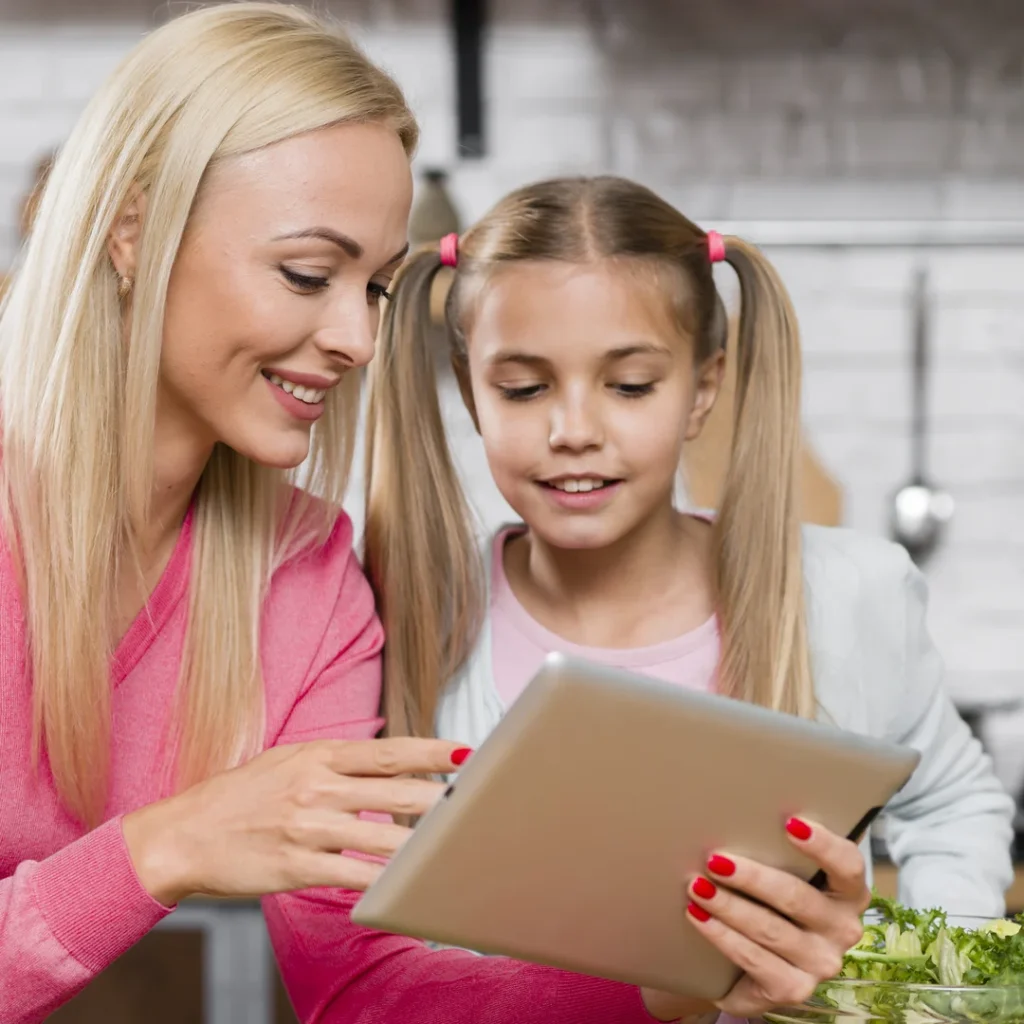
You don’t need a formal lesson plan to raise a kind, emotionally aware child. Empathy grows in everyday life—in the quiet, ordinary moments that often go unnoticed.
It’s the way your child gently hands their baby sibling a toy. It’s the note they write to a friend who’s had a rough day. It’s when they say, “Can I help?” without being asked.
If we look closely, these moments are everywhere.
How to Encourage Everyday Empathy:
- Show, don’t just tell: When you hold the door for someone or check on a sick neighbor, narrate it—“I thought they might need a little help today.”
- Catch them being kind: Acknowledge it when your child helps without being prompted. “That was really thoughtful of you.”
- Ask reflective questions: “How do you think your friend felt when you gave them that drawing?” These questions build emotional awareness.
🧩 These small acts of kindness become part of your child’s inner compass. They learn that empathy isn’t just something we talk about—it’s something we live.
Raising Empathetic Kids in Online Spaces

Let’s face it: screens aren’t going anywhere. Whether it’s texting, gaming, or sharing memes, our children live in a world where relationships are partly digital.
That doesn’t mean emotional intelligence has to get lost in the scroll.
Teaching empathy in online spaces starts with one core belief: behind every screen is a real person.
What You Can Teach (Without a Lecture):
- Tone matters, even in text: A joke can land wrong if the other person is already having a bad day. Teach kids to think: “Could this be misunderstood?”
- Pause before you post: Ask them, “Would you say that to their face?” If not, maybe rethink it.
- Kindness travels far online: A single compliment, a thumbs-up, a message saying “I’m thinking of you” can brighten someone’s whole day.
💬 Parenting in the digital age is not just about setting time limits. It’s about teaching values that travel with your child—whether they’re in a classroom or on a screen.
By prioritizing self-compassion exercises, children develop emotional resilience, making them more capable of forming empathetic relationships with those around them.
Start With Self-Compassion

Here’s something we don’t talk about enough: kids can’t pour from an empty cup. If we want them to be gentle with others, they need to be able to be gentle with themselves first.
Self-compassion is the first step toward being truly empathetic. It’s what lets a child say, “I made a mistake, but I can fix it,” instead of spiraling into shame.
How to Nurture That Inner Kind Voice:
- Model it: When you burn dinner, say, “Oops, I messed up—but it’s okay. I’ll try again.”
- Let them fail safely: When they make a mistake, guide them toward reflection instead of scolding.
- Practice self-kindness out loud: Use phrases like “It’s okay to feel this way,” or “I’m learning, and that’s enough.”
🧠 Empathy starts with understanding our own feelings. Once kids can do that, they’re better equipped to understand others, too.
Conversations That Grow Connection
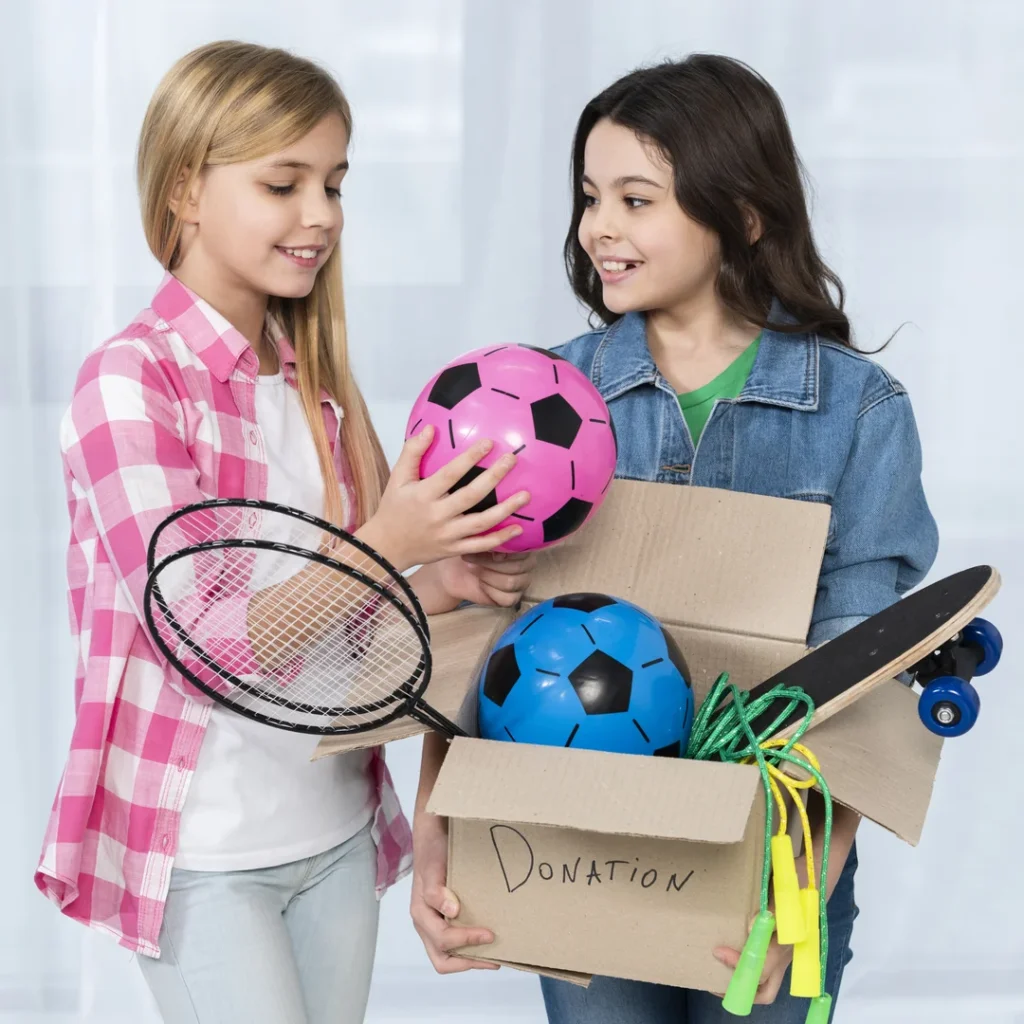
Want to raise an empathetic child? Talk to them. Not just about rules or school—but about life. Feelings. Mistakes. Moments that made you cry. Or laugh. Or think twice.
Conversation is where empathy grows roots.
Here’s What Helps:
- Ask better questions: Instead of “How was school?”, try “Was there a moment today that made you feel proud?” or “Did you see someone being kind today?”
- Talk through emotions: Watch a movie together and ask, “Why do you think she reacted that way?”
- Be real: Share how you’re feeling—when you’re tired, worried, or even confused. It gives them permission to do the same.
💬 These conversations don’t need to be deep every time. But when they happen often enough, they teach kids that emotions are safe, important, and worth understanding.
Turn collaborative play into kindness-training opportunities.
Exploring the Different Types of Kindness


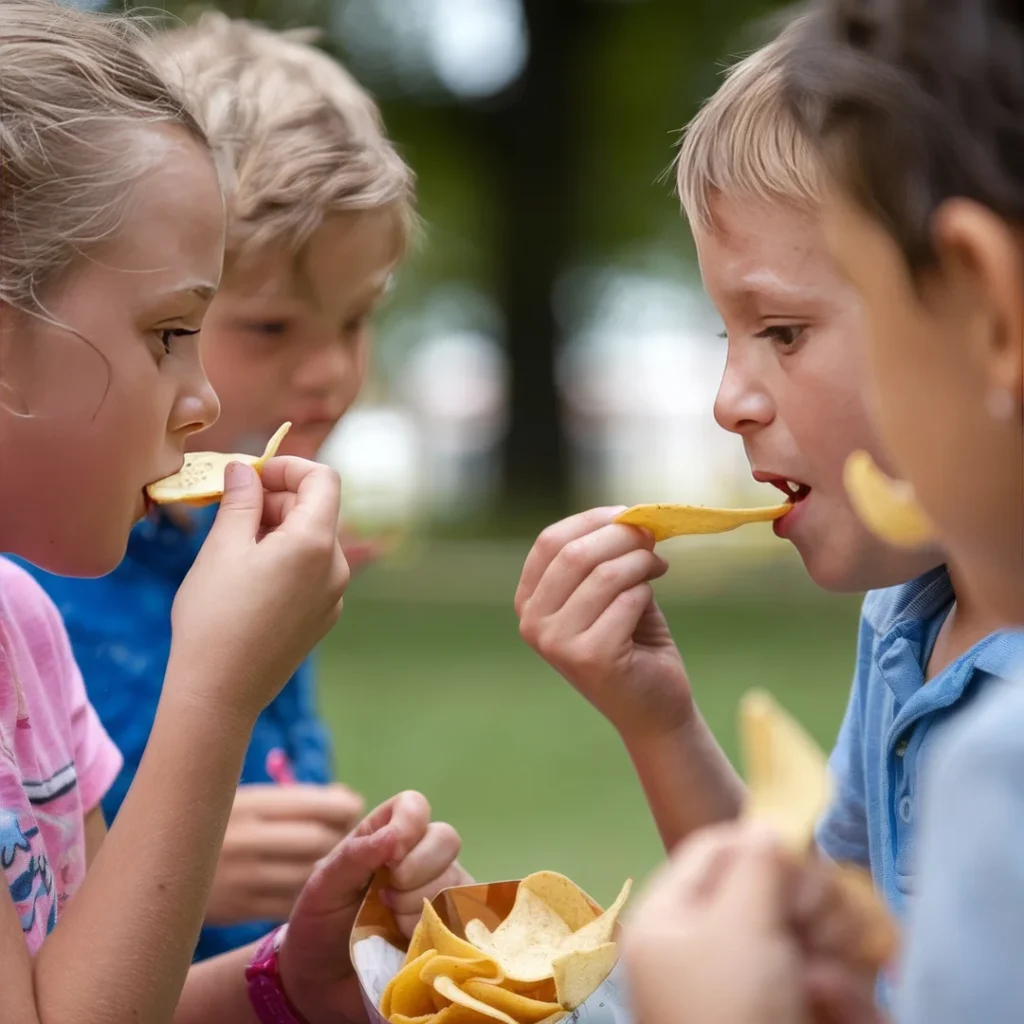
When we talk about being kind, we often think of sharing toys or saying thank you. But kindness shows up in many ways. Teaching kids about the types of kindness gives them more tools to connect and care.
Here’s a breakdown kids can relate to:
1. Emotional Kindness
Feeling someone’s pain and offering comfort.
🟢 Example: Hugging a friend who’s had a hard day.
2. Physical Kindness
Using your body to help.
🟢 Example: Helping carry groceries or pushing a younger sibling on the swing.
3. Verbal Kindness
Speaking with warmth and encouragement.
🟢 Example: Saying “You did your best—I’m proud of you.”
4. Intentional Kindness
Going out of your way to brighten someone’s day.
🟢 Example: Writing a note to thank your teacher or baking cookies for a neighbor.
🎯 Tip for parents: Point out these moments when they happen. “That was verbal kindness when you encouraged your friend today.”
FAQs: Real Questions Parents Ask About Raising Empathetic Kids
Honestly? Because a lot of their world isn’t happening face-to-face anymore. They’re texting, watching, scrolling—rarely looking someone in the eye while they talk. When you take away those real-life signals, like a shaky voice or a long pause, it’s harder for kids to feel what someone else is feeling. So, as parents navigating the digital age, we’ve got to work a little harder to bring emotional understanding back into everyday life.
Start by reminding them that the person on the other side of the screen is, well, a person. Someone with feelings, just like them. I sometimes ask my kids, “Would you say that if they were standing right in front of you?” That one question shifts a lot. It’s not about policing them—it’s about helping them see that kindness belongs online, too.
There’s no “right” age. Even little ones—toddlers—can start to understand what it means to be gentle or comforting. As they grow, the lessons shift. We use different examples, bigger conversations. The important thing is just to start. Talk about feelings. Ask them questions. Keep it going.
I like to point out kindness when it happens in everyday life. If they pick up something someone dropped, that’s physical kindness. If they say something sweet to a friend, that’s verbal kindness. If they make a card for grandma “just because,” that’s intentional kindness. When they sit with a classmate who’s having a bad day and just be there? That’s the emotional kind. Real-life examples make it click.
Absolutely. If they can learn to be gentler with their own feelings, it opens the door for them to treat others the same way. I try to model that by saying things like, “I had a tough moment today—but I’m giving myself some grace.” When they see us being human, forgiving ourselves, they learn that being empathetic starts inside.
You don’t need to plan a speech. Just be real with them. When I mess up, I say, “I shouldn’t have raised my voice. I’m sorry. I was overwhelmed.” Or if I see someone struggling, I explain why I offered to help. It’s in those moments—unpolished and honest—that our kids learn how to care.
Ask them how someone else might’ve felt today. That’s it. While you’re driving, doing dishes, getting ready for bed. “Did you notice anyone who looked upset?” or “Did you help someone today?” Little questions, asked often, can quietly shape how they see the world.
Final Thoughts: Parenting with Heart in a Tech-Driven World

This isn’t about raising perfect kids. It’s about raising present ones.
Kids who notice when someone’s hurting. Kids who check in with friends. Kids who apologize with sincerity and help without being asked. Kids who know how to be empathetic—even when no one’s watching.
That kind of kindness doesn’t just happen. It’s modeled. It’s practiced. And yes, sometimes it’s messy. But over time, it becomes part of who they are.
As we navigate parenting in the digital age, we have a choice: to fear what screens are doing—or to focus on what we can teach through it all.
Let’s choose empathy. Let’s choose connection.
Let’s raise a generation that values kindness, both online and off.
📌 Follow us here: @rootswingsandwellness
Join our community and be part of a movement that prioritizes kindness, self-compassion, and intentional parenting!
Check out our insightful articles on family wellness and parenting at Roots, Wings & Wellness.



